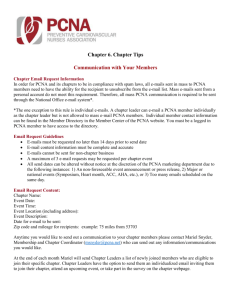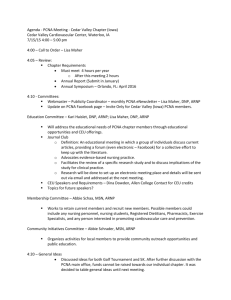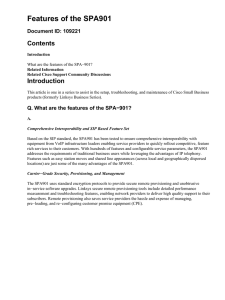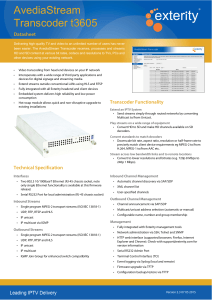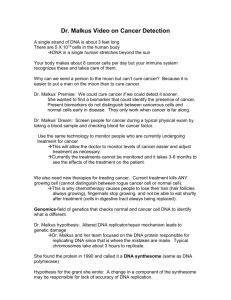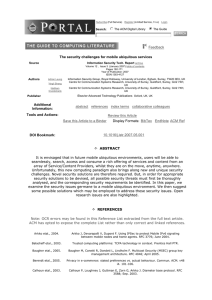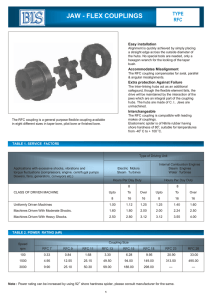Supplementary Methods - Word file (23 KB )
advertisement
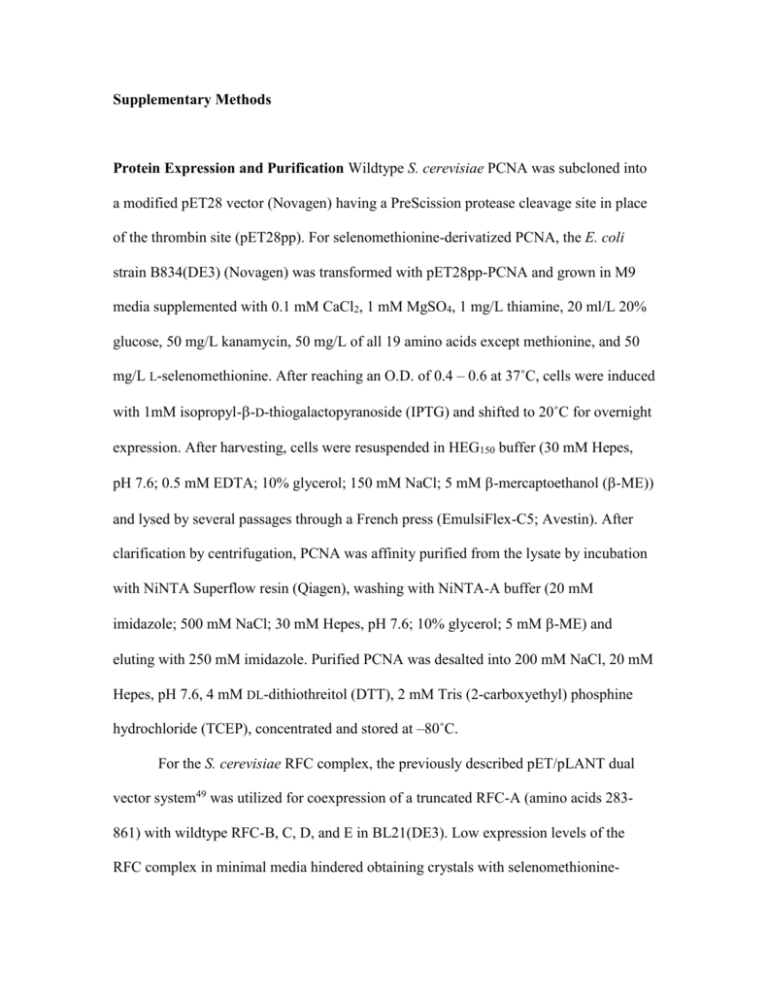
Supplementary Methods Protein Expression and Purification Wildtype S. cerevisiae PCNA was subcloned into a modified pET28 vector (Novagen) having a PreScission protease cleavage site in place of the thrombin site (pET28pp). For selenomethionine-derivatized PCNA, the E. coli strain B834(DE3) (Novagen) was transformed with pET28pp-PCNA and grown in M9 media supplemented with 0.1 mM CaCl2, 1 mM MgSO4, 1 mg/L thiamine, 20 ml/L 20% glucose, 50 mg/L kanamycin, 50 mg/L of all 19 amino acids except methionine, and 50 mg/L L-selenomethionine. After reaching an O.D. of 0.4 – 0.6 at 37˚C, cells were induced with 1mM isopropyl--D-thiogalactopyranoside (IPTG) and shifted to 20˚C for overnight expression. After harvesting, cells were resuspended in HEG150 buffer (30 mM Hepes, pH 7.6; 0.5 mM EDTA; 10% glycerol; 150 mM NaCl; 5 mM -mercaptoethanol (-ME)) and lysed by several passages through a French press (EmulsiFlex-C5; Avestin). After clarification by centrifugation, PCNA was affinity purified from the lysate by incubation with NiNTA Superflow resin (Qiagen), washing with NiNTA-A buffer (20 mM imidazole; 500 mM NaCl; 30 mM Hepes, pH 7.6; 10% glycerol; 5 mM -ME) and eluting with 250 mM imidazole. Purified PCNA was desalted into 200 mM NaCl, 20 mM Hepes, pH 7.6, 4 mM DL-dithiothreitol (DTT), 2 mM Tris (2-carboxyethyl) phosphine hydrochloride (TCEP), concentrated and stored at –80˚C. For the S. cerevisiae RFC complex, the previously described pET/pLANT dual vector system49 was utilized for coexpression of a truncated RFC-A (amino acids 283861) with wildtype RFC-B, C, D, and E in BL21(DE3). Low expression levels of the RFC complex in minimal media hindered obtaining crystals with selenomethionine- derivatized RFC; PCNA was therefore the sole source of selenomethionine, and the RFC complex was expressed in Terrific Broth using a protocol similar to that described above. For purification, the RFC complex was bound to an SP FastFlow column (Pharmacia), washed with HEG150, and eluted with a NaCl gradient. Fractions containing all five RFC subunits were bound to NiNTA resin, washed with NiNTA-A buffer and eluted with 250 mM imidazole. Proteolytic digests of the RFC complex revealed an immediate loss of ~10kDa from RFC1, after which the complex appeared relatively stable. cDNA corresponding amino acids 295-785 of RFC1 was cloned into pET28pp and further subcloned into pLANT. ATPase activity assay ATPase activity was monitored through a coupled assay50 by measuring the reduction in absorbance at 340 nm due to the oxidation of NADH. Reactions (100l) were carried out in a SpectraMAX spectrophotometer (Molecular Devices) at 30˚C using a in 100mM Tris, pH 7.5, 10mM MgCl2, 0.5 mM ATP, 1mM phosphoenolpyruvate, 0.28 mM NADH, 178 units/ml pyruvate kinase, 248 units/ml lactate dehydrogenase, and, when present, 1.4 M RFC complex, 10 M PCNA, and 1 M primer-template DNA. The DNA consisted of two complementary primers, 28 and 41 nucleotides in length, yielding a 5’ overhang of 13 nucleotides.


